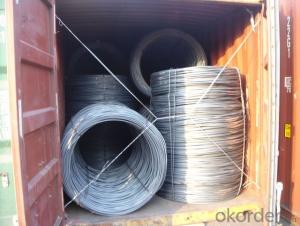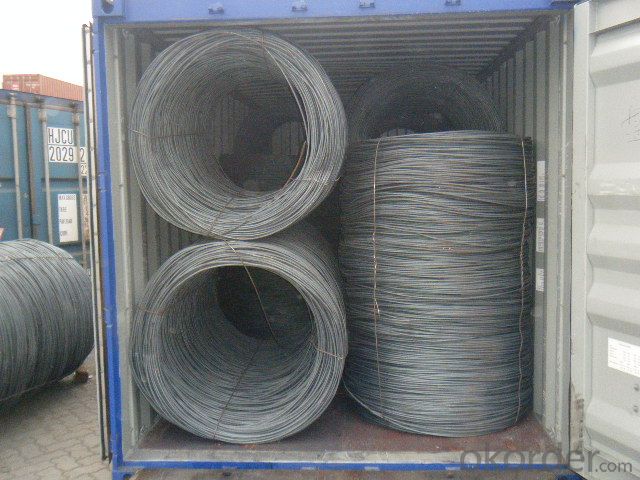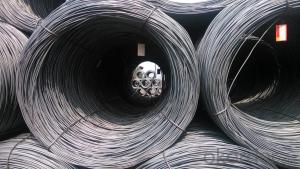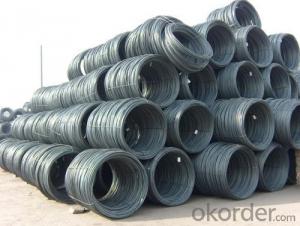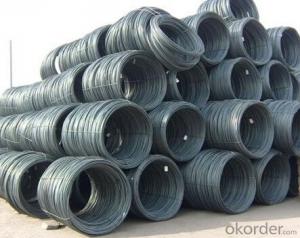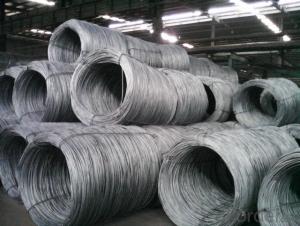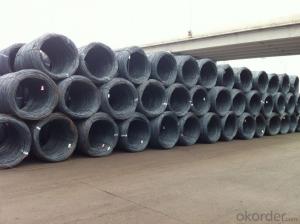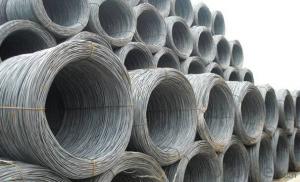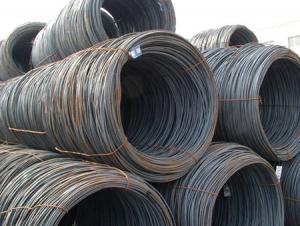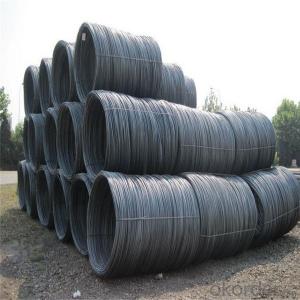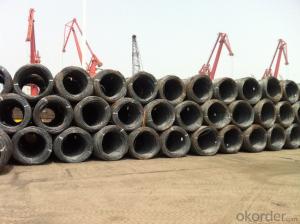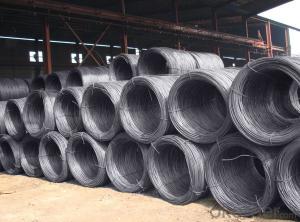steel wire rope price SAE1008 100 Metric Ton
- Loading Port:
- Tianjin
- Payment Terms:
- TT OR LC
- Min Order Qty:
- 20 m.t.
- Supply Capability:
- 18000 m.t./month
OKorder Service Pledge
OKorder Financial Service
You Might Also Like
Specifications
steel wire rope price
1)Grade:Q195/235,SAE1010,SAE1008,SAE1018B
2)Dia:5.5-14mm
3)Moq: 100 tons
4)Proce:FOB520-575usd/ton
steel wire rope price SAE1008
1.Diameter: 5.5mm-14mm
2.Material:Q195-235; SAE1008-SAE1018
3.surface:round,no twisted,light and smooth
4.Coil weight:1.8-2.1ton
5. Measurement of Weight: By Actual Weighting
6.Coil OD:1.1M
7.Applicant: wire drawing,welding electrode, nail
8.Payment term: TT or L/C at sight
Please kindly find our chemistry of our material based on SAE1006B and SAE1008B as below for
your information:
Grade | Chemical Composition(%) | |||||
C | Mn | Si | S | P | B | |
SAE1006B | 0.03~O.07 | ≤0.32 | ≤0.30 | ≤0.045 | ≤0.040 | >0.0008 |
Mechanical properties | ||||||
Yield strength(N/mm2) | Tensile strength(N/mm2) | Elongation(%) | ||||
250-280 | 350-380 | ≥32 | ||||
Grade | Chemical Composition(%) | |||||
C | Mn | Si | S | P | B | |
SAE1008B | 0.10max | 0.3~O.50 | 0.15max | 0.050max | 0.040 max | 0.0008 min |
Mechanical properties | ||||||
Yield strength(N/mm2) | Tensile strength(N/mm2) | Elongation(%) | ||||
≥195 | 315-430 | ≥30 | ||||
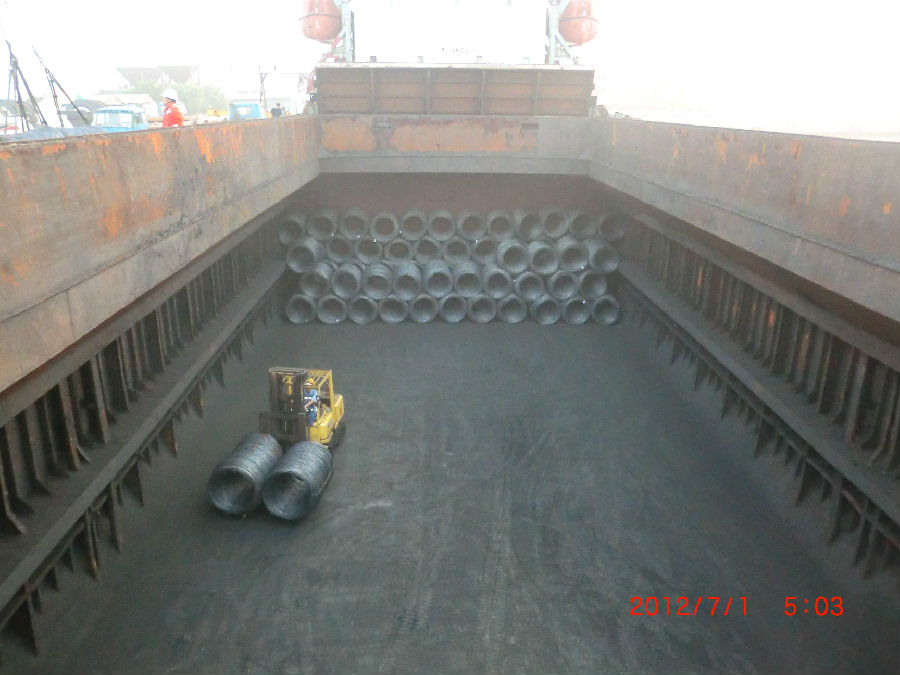
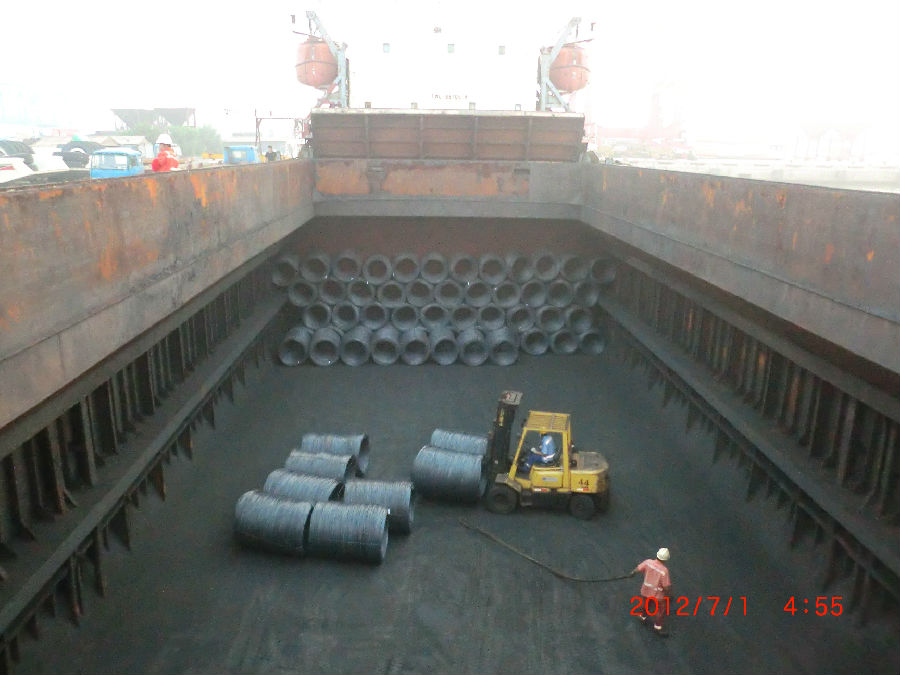
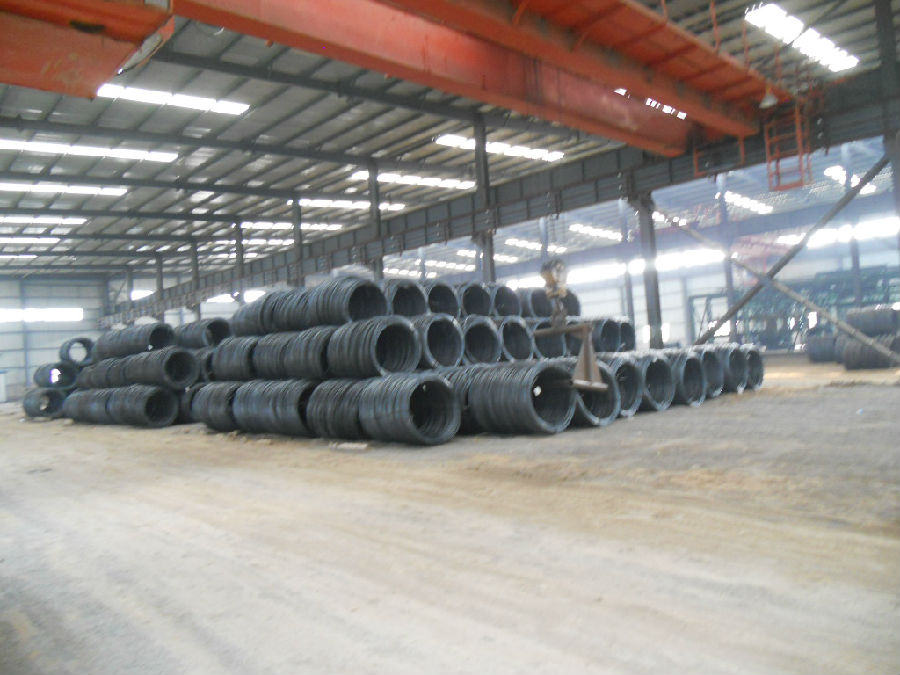
- Q: What are the different types of tests performed on steel wire rod?
- There are several types of tests performed on steel wire rod to ensure its quality and suitability for various applications. These tests include: 1. Chemical Composition Analysis: This test determines the percentage of different elements present in the steel wire rod, such as carbon, manganese, silicon, sulfur, phosphorus, and other trace elements. It helps to ensure that the steel meets the required specifications. 2. Tensile Strength Test: This test measures the ability of the steel wire rod to withstand tension or pulling forces without breaking. It determines the maximum load the rod can bear before it fractures, providing crucial information about its strength and durability. 3. Elongation Test: This test determines the percentage increase in length the steel wire rod undergoes before it breaks under tension. It helps to assess the ductility and malleability of the rod, indicating its ability to withstand deformation without fracturing. 4. Hardness Test: This test measures the resistance of the steel wire rod to indentation or scratching. It provides an indication of the material's strength and ability to resist wear and tear. 5. Microstructure Analysis: This test involves examining the microstructure of the steel wire rod under a microscope. It helps to identify any structural anomalies, such as grain size, presence of inclusions, and uniformity, which can affect the rod's mechanical properties. 6. Surface Inspection: This test involves visually inspecting the surface of the steel wire rod for any defects, such as cracks, scratches, or surface irregularities. It ensures that the rod meets the required visual quality standards. 7. Dimensional Inspection: This test verifies the dimensional accuracy and tolerances of the steel wire rod, such as diameter, length, and straightness. It ensures that the rod meets the specified dimensional requirements for its intended application. 8. Corrosion Resistance Test: This test evaluates the steel wire rod's ability to resist corrosion when exposed to different environmental conditions. It helps to determine the rod's suitability for applications where corrosion resistance is critical. By performing these tests, manufacturers can ensure that the steel wire rod meets the necessary quality standards and is suitable for use in various industries, including construction, automotive, manufacturing, and infrastructure.
- Q: How is steel wire rod used in the production of wire for musical instruments?
- Steel wire rod is used in the production of wire for musical instruments as it provides the necessary strength and durability required for the strings. Through a series of processes such as drawing, annealing, and coating, the steel wire rod is transformed into thin and flexible wire that can be used for guitar, piano, or violin strings. The quality of the steel wire rod directly affects the sound quality and longevity of the instrument's strings, making it an essential component in their production.
- Q: What are the common surface defects in steel wire rod?
- Common surface defects in steel wire rods include surface cracks, scratches, pits, scale, rust, and surface decarburization. These defects can affect the quality and performance of the wire rods and may require additional processing or surface treatment to rectify.
- Q: How does steel wire rod compare to other materials, such as aluminum or copper?
- Steel wire rod is known for its exceptional strength and durability, making it a preferred choice in various industries. In comparison to materials like aluminum or copper, steel wire rod possesses superior tensile strength and a higher load-bearing capacity. Additionally, steel wire rod is more resistant to corrosion and can withstand higher temperatures. While aluminum and copper may offer certain advantages such as lighter weight or enhanced electrical conductivity, steel wire rod's strength and robustness make it an excellent choice for applications that require durability and structural integrity.
- Q: What are the main factors influencing the choice of steel wire rod order storage tracking options?
- There are several main factors that influence the choice of steel wire rod order storage tracking options. Firstly, the size and complexity of the storage facility play a significant role in determining the tracking options. If the facility is large and has multiple storage areas or racks, it becomes essential to have a comprehensive tracking system that can accurately locate and monitor each order of steel wire rod. Secondly, the frequency and volume of incoming and outgoing orders also impact the choice of tracking options. If the facility handles a high volume of orders on a regular basis, a real-time tracking system that provides instant updates on the status and location of each order becomes crucial for efficient operations. Thirdly, the level of automation in the storage facility is another factor to consider. If the facility is highly automated, with robotic systems handling the movement and storage of steel wire rod, the tracking options should integrate seamlessly with the automation system to ensure accurate and synchronized tracking of orders. Additionally, the specific requirements and preferences of the customers and suppliers can influence the choice of tracking options. Some customers may require real-time updates and visibility into the status of their orders, while others may prioritize cost-effectiveness or simplicity. Similarly, suppliers may have their own tracking systems in place, which need to be compatible with the storage facility's tracking options. Lastly, the overall budget allocated for implementing and maintaining the tracking system is an important consideration. More advanced tracking options, such as RFID or barcode systems, may require higher upfront investment and ongoing maintenance costs. Therefore, the financial resources available will impact the chosen tracking options. In conclusion, the choice of steel wire rod order storage tracking options is influenced by factors such as the size and complexity of the storage facility, the frequency and volume of orders, the level of automation, customer and supplier requirements, and budget constraints. By carefully considering these factors, an appropriate tracking system can be selected to streamline operations and enhance efficiency in managing steel wire rod orders.
- Q: What are the different types of steel wire rod surface defect quantification methods?
- There are several different types of steel wire rod surface defect quantification methods, including visual inspection, manual measurement, automated measurement, and image processing techniques. Visual inspection involves visually examining the surface of the wire rod for any defects or abnormalities. Manual measurement involves using measuring instruments to quantify the size, shape, and depth of surface defects. Automated measurement techniques utilize specialized equipment and sensors to automatically detect and measure surface defects. Image processing techniques involve capturing images of the wire rod surface and then using algorithms to analyze and quantify any defects present.
- Q: How are steel wire rods used in the production of barbed wire for security fencing?
- In the production of security fencing, steel wire rods are essential. They are used to create the twisted and sharp barbs that provide deterrence and protection. To begin the process, the steel wire rods are drawn through a series of dies. This reduces their diameter and increases their length, a process known as wire drawing. It improves the strength and durability of the wire. Once the wire rods have been drawn, they are twisted together to form a strong, continuous strand of wire. This twisted wire serves as the backbone of the barbed wire, providing stability and support. Next, the twisted wire is interwoven with sharp, pointed barbs. These barbs are made by cutting short lengths of the wire rods, sharpening the ends, and attaching them to the twisted wire at regular intervals. The placement and spacing of the barbs are strategic to maximize the security and deterrent effect of the barbed wire. After attaching the barbs, the barbed wire is typically galvanized to enhance its resistance to corrosion. The galvanization process involves coating the wire with a layer of zinc, providing a protective barrier against rust and environmental factors. This ensures the barbed wire remains strong and effective in various weather conditions. Once the galvanized barbed wire is produced, it can be wound onto spools or packaged in coils for easy transportation and installation. It is then ready to be installed as a security measure, typically on top of fences, walls, or other structures requiring additional protection. In conclusion, steel wire rods are crucial in the production of barbed wire for security fencing. They are transformed into twisted wire strands, which form the backbone of the barbed wire. Combined with sharp barbs, they create an effective deterrent. The use of steel wire rods ensures the barbed wire is strong, durable, and capable of withstanding harsh conditions, making it an essential component in security fencing systems.
- Q: How does the ductility of steel wire rod vary with different heat treatment processes?
- The ductility of steel wire rod can vary with different heat treatment processes. Heat treatment processes such as annealing and tempering can improve the ductility of steel wire rod by reducing its hardness and increasing its flexibility. On the other hand, processes like quenching and martempering can decrease the ductility of steel wire rod by increasing its hardness and brittleness. Therefore, the specific heat treatment process chosen can significantly affect the ductility of steel wire rod.
- Q: What are the common production processes for darmstadtium-coated steel wire rod?
- The common production processes for darmstadtium-coated steel wire rod involve several steps. First, the steel wire rod is thoroughly cleaned and pre-treated to remove any impurities or contaminants. Then, a layer of darmstadtium is deposited onto the surface of the wire rod using a specialized coating technique such as electroplating or physical vapor deposition. After the darmstadtium coating is applied, the wire rod undergoes a curing or annealing process to ensure the coating adheres properly and has the desired properties. Finally, the coated wire rod is inspected for quality control and may undergo further processing or packaging before being sent for distribution or use in various applications.
- Q: What are the main factors influencing the choice of steel wire rod order return policy?
- The main factors influencing the choice of steel wire rod order return policy include customer satisfaction, market demand, product quality, legal requirements, and the company's overall business strategy.
Send your message to us
steel wire rope price SAE1008 100 Metric Ton
- Loading Port:
- Tianjin
- Payment Terms:
- TT OR LC
- Min Order Qty:
- 20 m.t.
- Supply Capability:
- 18000 m.t./month
OKorder Service Pledge
OKorder Financial Service
Similar products
Hot products
Hot Searches
Related keywords
